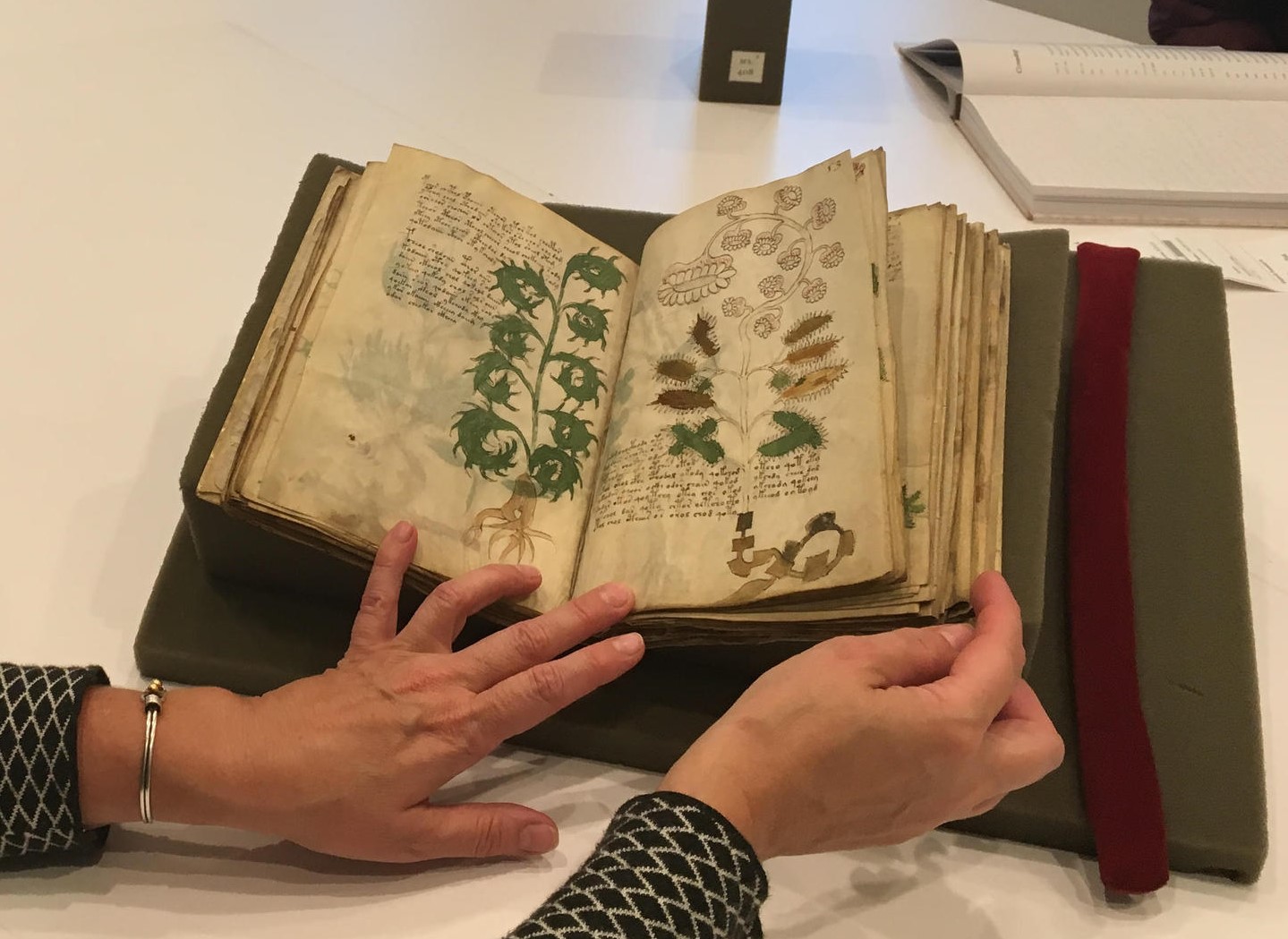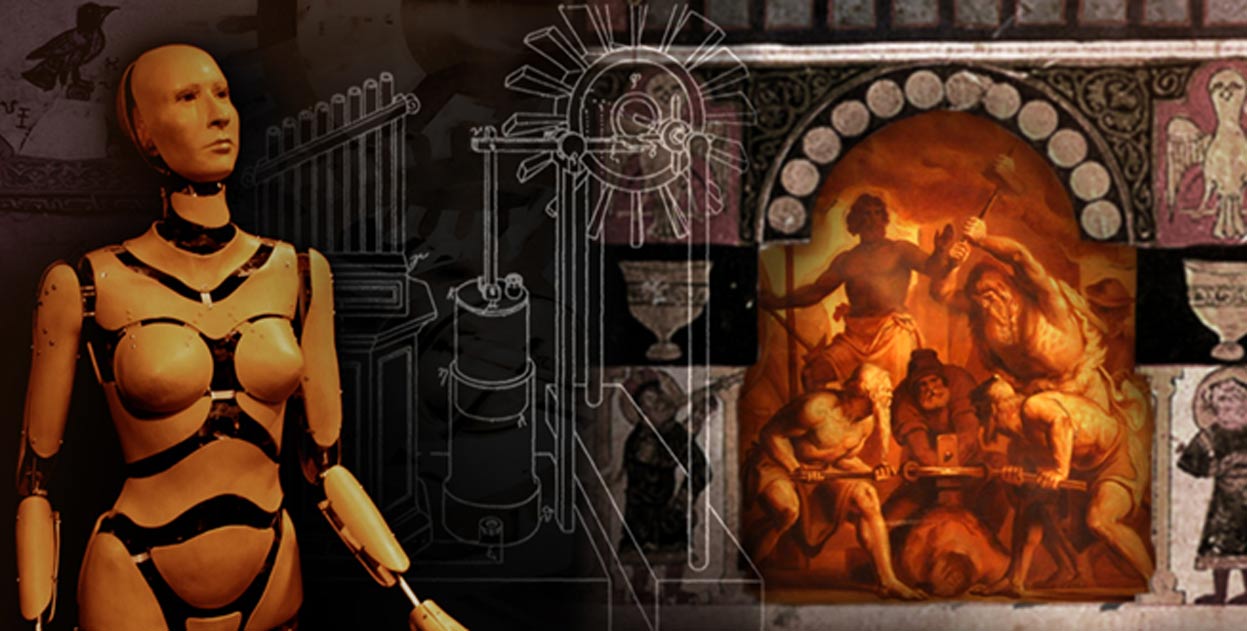
What is the Voynich Manuscript? Imagine a book filled with strange symbols, mysterious plants, and odd illustrations that no one can understand. That's the Voynich Manuscript. Named after Wilfrid Voynich, who bought it in 1912, this ancient text dates back to the early 15th century. Written in an unknown script called Voynichese, it has puzzled experts for over a century. Despite numerous attempts, no one has cracked its code. The manuscript is divided into sections featuring herbal, astronomical, biological, cosmological, pharmaceutical, and recipe themes. Its high-quality vellum pages and intricate drawings only add to its enigma.
Key Takeaways:
- The Voynich Manuscript, a mysterious document from the 15th century, baffles experts with its unknown language and fantastical illustrations, sparking ongoing fascination and speculation.
- Despite centuries of study and numerous theories, the Voynich Manuscript's enigmatic script and ownership history continue to captivate scholars and the public, ensuring its status as a captivating historical puzzle.
The Mysterious Origins of the Voynich Manuscript
The Voynich Manuscript has puzzled scholars and cryptographers for over a century. Its origins, language, and purpose remain a mystery, making it one of the most intriguing documents in history.
-
Name and Origin: Named after Wilfrid Voynich, a Polish book dealer who bought it in 1912, the manuscript is believed to have been created in the early 15th century. Carbon dating places its creation between 1404 and 1438.
-
Composition: The manuscript consists of approximately 240 pages, though some are missing. It is written on vellum, a high-quality material made from animal skin, common for medieval manuscripts.
The Enigmatic Script and Illustrations
The text and images in the Voynich Manuscript are unlike anything seen before. The script, known as Voynichese, and the fantastical illustrations add layers to its mystery.
-
Script and Language: Written in an unknown script called Voynichese, the text has defied all attempts at decipherment. No one has been able to understand the language or script, making it one of the world's most mysterious texts.
-
Illustrations: The manuscript is famous for its intricate and fantastical illustrations. These include depictions of people, fictitious plants, astrological symbols, and other fantastical images. Many illustrations are crudely colored, adding to their enigmatic nature.
Sections of the Manuscript
The manuscript is divided into several sections based on the images and content. Each section contains unique and often unidentified elements.
-
Herbal Section: This part contains images of plants, some identified like the Wild pansy and Maidenhair fern. However, many plant pictures are composite, combining parts of different plants.
-
Astronomical Section: Includes images resembling astrological symbols and the zodiac. These symbols haven't been definitively linked to any known astrological tradition, adding to the mystery.
-
Biological Section: Features images of women bathing in pools, some wearing crowns. These images have been interpreted in various ways, including as part of alchemical or medical practices.
-
Cosmological Section: Contains circular diagrams and foldouts, including one with six pages depicting connected islands and a volcano. These diagrams are highly complex and subject to various interpretations.
-
Pharmaceutical Section: Includes labeled images of plant parts and jars for medicines. This section has been linked to alchemical practices, given the presence of tubes and other equipment.
-
Recipes Section: Contains short passages of text, often preceded by star or flower-like illustrations. These passages remain undeciphered, adding to the manuscript's enigma.
Ownership and Historical Journey
The manuscript's ownership history is as complex as its content. It has passed through many hands, each adding to its mystique.
-
Ownership History: Purchased by Wilfrid Voynich in 1912, it was later donated to Yale University in 1969. In 2020, Yale uploaded the entire manuscript to its online digital library, making it accessible to the public.
-
Cryptographic Attempts: Both professional and amateur cryptographers, including American and British codebreakers from both World Wars, have studied the manuscript. Despite their efforts, no one has deciphered the text.
-
Leonell C. Strong’s Theory: Strong, a cancer research scientist and amateur cryptographer, believed the solution lay in a "peculiar double system of arithmetical progressions of a multiple alphabet." He published a translation of two pages in 1947, claiming the plaintext revealed the manuscript was written by 16th-century English author Anthony Ascham.
-
Robert S. Brumbaugh’s Theory: In 1978, Brumbaugh, a professor of classical and medieval philosophy at Yale, claimed the manuscript was a forgery intended to fool Emperor Rudolf II into purchasing it. He suggested the text is Latin enciphered with a complex, two-step method.
-
John Stojko’s Theory: Stojko published "Letters to God's Eye" in 1978, claiming the manuscript was a series of letters written in vowelless Ukrainian. This theory caused a sensation among the Ukrainian diaspora but was later criticized for its lack of correlation with the images and the general looseness in the decryption method.
-
Stephen Bax’s Theory: In 2014, Professor Stephen Bax proposed a "provisional, partial decoding" of the manuscript. He suggested it is a treatise on nature, in a Near Eastern or Asian language. Although significant, no full translation was made before his death in 2017.
Scientific Analysis and Discoveries
Scientific methods have been employed to understand the manuscript better, but many questions remain unanswered.
-
Radiocarbon Dating: In 2009, University of Arizona researchers performed radiocarbon dating on the vellum, confirming it was made between 1404 and 1438 with 95% confidence. The McCrone Research Institute in Chicago also found much of the ink was added not long after the vellum was created, confirming its authenticity as a medieval document.
-
Ownership by Emperor Rudolf II: The manuscript was once owned by Holy Roman Emperor Rudolf II, who purchased it from an unnamed seller for 600 ducats between 1576 and 1612. However, analysis shows it was originally created during the 15th century, roughly 150 years before Rudolf obtained it.
-
Georg Baresch and Johannes Marcus Marci: Later owned by Georg Baresch, an alchemist who passed it to Johannes Marcus Marci. Marci sent the manuscript to Athanasius Kircher in 1665 or 1666, along with a cover letter indicating he believed only Kircher could decipher it.
-
Stefan Guzy’s Research: In January 2023, researcher Stefan Guzy potentially traced back the manuscript's ownership using imperial account books from Vienna and Prague. He discovered it had once been in Emperor Rudolf II's possession and was sold to him for 600 gold coins.
Unique Features and Ongoing Speculation
The Voynich Manuscript's unique features and the ongoing efforts to decipher it continue to captivate scholars and enthusiasts alike.
-
High-Quality Materials: The vellum used is of high quality, with both sides of the skin whitened. This suggests the book was created with advanced materials and processes, unlikely the work of a solitary individual.
-
Lack of Corrections: Unlike many medieval manuscripts, there are no errors or corrections in the text. This has led some to speculate about its creation process.
-
Foldable Folios: The sizes and layout of the foldable folios are unusual. This unique feature has been noted by scholars, adding to the manuscript's enigmatic nature.
-
Ongoing Speculation: Despite decades of study and numerous attempts to decipher it, the manuscript remains one of the world's most mysterious documents. Its widespread availability online has sparked new waves of speculation and research.
-
Public Fascination: The Voynich Manuscript continues to captivate the public's imagination. Its intricate illustrations, undeciphered script, and complex ownership history ensure it remains a fascinating puzzle for generations to come.
The Enduring Mystery of the Voynich Manuscript
The Voynich Manuscript remains one of history's most puzzling documents. Despite extensive research, its origins, language, and purpose are still unknown. The manuscript's intricate illustrations and undeciphered script continue to captivate scholars and enthusiasts alike. From its herbal and astronomical sections to its pharmaceutical and recipes sections, each part adds layers to its enigma. Theories abound, but none have cracked the code. Its ownership history, including time with Emperor Rudolf II, adds to its allure. High-quality materials and lack of corrections suggest a sophisticated creation process. The manuscript's widespread availability online has sparked new waves of speculation and research. As technology advances, perhaps future generations will finally unlock its secrets. Until then, the Voynich Manuscript stands as a testament to human curiosity and the enduring mystery of ancient texts.
Frequently Asked Questions
Was this page helpful?
Our commitment to delivering trustworthy and engaging content is at the heart of what we do. Each fact on our site is contributed by real users like you, bringing a wealth of diverse insights and information. To ensure the highest standards of accuracy and reliability, our dedicated editors meticulously review each submission. This process guarantees that the facts we share are not only fascinating but also credible. Trust in our commitment to quality and authenticity as you explore and learn with us.


